Key takeaways:
- Direct engagement with community members reveals critical insights that quantitative data alone cannot capture, emphasizing the importance of personal narratives in understanding policy needs.
- Assessing policy needs through methods like surveys, focus groups, and participatory mapping fosters collaboration and empowers community voices, leading to more relevant and effective policies.
- Corruption often operates under normalized behaviors, and engaging stakeholders is key to uncovering the human impact of corruption, which statistics might overlook.
- Creating a safe space for dialogue encourages transparency and trust, allowing community members to share their experiences and potentially influence policy change.
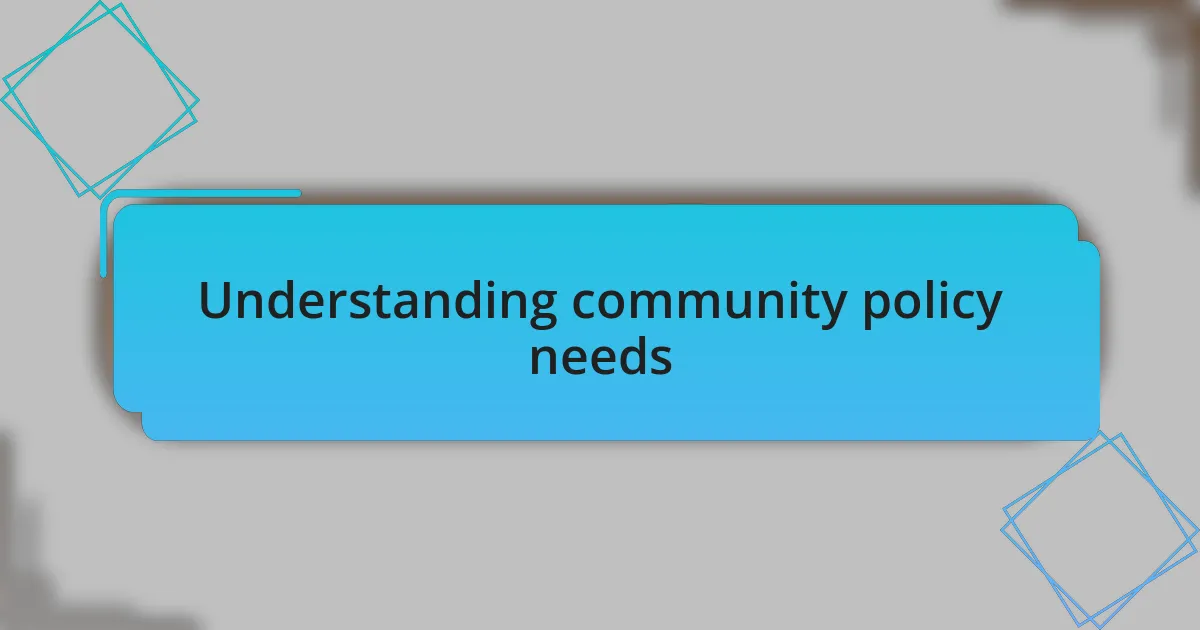
Understanding community policy needs
Understanding community policy needs requires a nuanced approach that genuinely considers local stakeholders’ voices. I’ve often found that engaging directly with community members reveals insights that quantitative data alone cannot capture. For instance, I once attended a community meeting where residents shared their daily struggles with access to public services. Hearing their stories shifted my perspective entirely.
I believe that we often overlook the emotional weight behind policy needs. Just last year, in a small town plagued by local corruption, I listened to a mother express her frustration about the lack of safe playgrounds for her children. This personal account illuminated how policies don’t just affect statistics; they touch lives in profound ways. Can we truly address community needs without understanding the human experiences behind them?
To dig deeper, I recommend conducting informal interviews or focus group discussions. In my experience, this approach fosters trust, allowing community members to express their concerns openly. The raw honesty I’ve encountered in such settings is invaluable and highlights how essential it is to view policy needs through a compassionate lens.

Importance of assessing policy needs
Assessing policy needs is vital because it lays the foundation for effective governance. When I engaged with a grassroots organization, they emphasized how knowing what the community truly wants can save resources and time. It made me realize that policies crafted in isolation risk being irrelevant or even counterproductive.
I’ve seen firsthand how neglecting community input can lead to unmet needs. In one instance, a health initiative was launched in a neighborhood rich with diversity but failed to consider cultural differences. This oversight not only frustrated residents but also led to decreased participation. It begs the question: how can policies succeed if they don’t reflect the community’s unique fabric?
When we assess policy needs, we facilitate a collaborative atmosphere where everyone feels included. I remember a workshop I facilitated where residents of all ages contributed ideas, and it was incredible to see how interconnected their concerns were. This collective approach not only empowers individuals but also fosters a sense of ownership over local issues. Isn’t it time we prioritized the voices that truly matter?
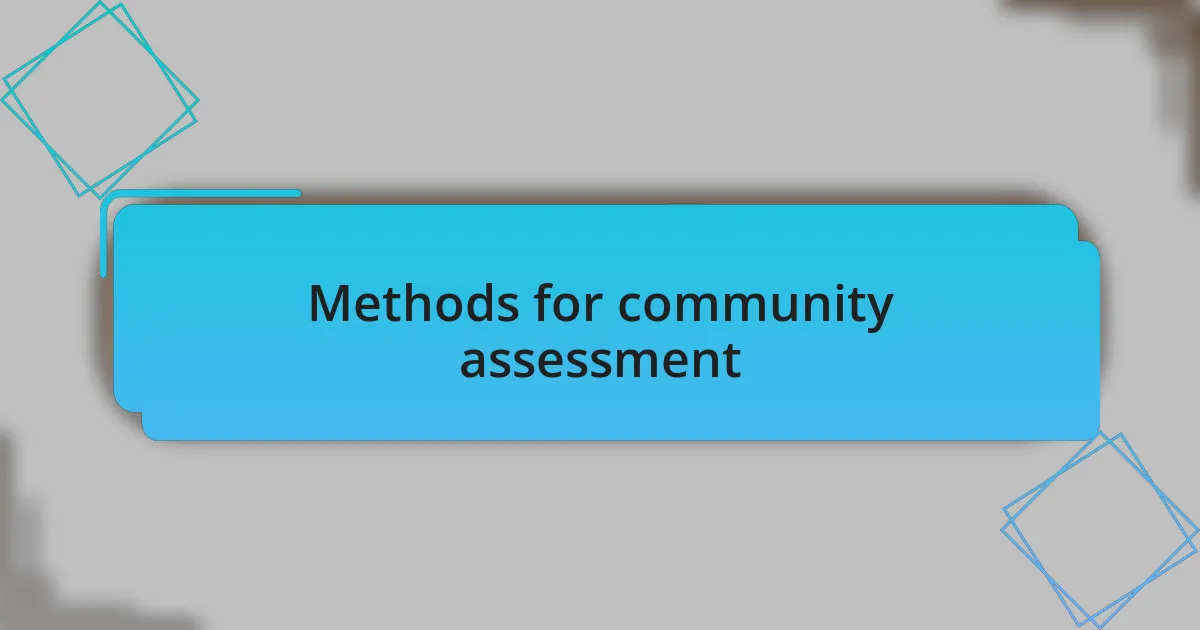
Methods for community assessment
When it comes to community assessment, one effective method I’ve found is conducting surveys. In a project I participated in, we designed a simple questionnaire to gather opinions from residents about local safety concerns. The responses revealed some surprising insights, like fears that were previously unaddressed. I often wonder how many issues remain hidden simply because we don’t ask the right questions.
Focus groups also play a crucial role in understanding community needs. I vividly recall sitting in a circle with a diverse group of community leaders, where the conversation flowed naturally. The depth of discussion was enlightening as participants shared real-life stories, touching on both their hopes and frustrations. This dialogue not only uncovered critical issues but also nurtured relationships among stakeholders—an invaluable byproduct of genuine conversations.
Lastly, I’ve learned that participatory mapping is a powerful tool in community assessment. On one occasion, I facilitated an exercise where residents marked areas on a map that they viewed as problematic or in need of improvement. Watching them engage with the map brought to light shared experiences and collective priorities that might have otherwise slipped through the cracks. It makes me think: how often do we overlook the physical spaces that shape our lives?

Analyzing corruption in communities
Corruption in communities often hides in plain sight, masked by daily routines and normalized behaviors. I remember one community meeting where a resident casually mentioned how bribes had become an expected cost of doing business with local authorities. This comment sent shockwaves through the room and prompted a heated discussion, highlighting how ingrained these practices had become. It made me reflect: how do we even begin to unravel such deeply entrenched corruption?
From my experience, quantitative data alone can miss the nuances of local corruption. While analyzing financial records and resource allocations is essential, the real stories come from conversations that reveal the emotional weight of corruption’s impact. A friend shared her story of trying to get a school repaired; she encountered repeated delays due to corrupt practices, which not only strained her community’s resources but also eroded trust. It raises the question: how can we quantify the loss of faith in public institutions?
Engaging community members in discussions about their experiences also unveils the human side of corruption, which statistics often overlook. Once, during a workshop I attended, participants narrated how corruption had affected their access to basic services like healthcare and education. Their passion and frustration were palpable, reminding me that corruption isn’t just a bureaucratic issue; it’s a personal struggle that shapes lives. How can policymakers address these concerns without first listening to those most affected?
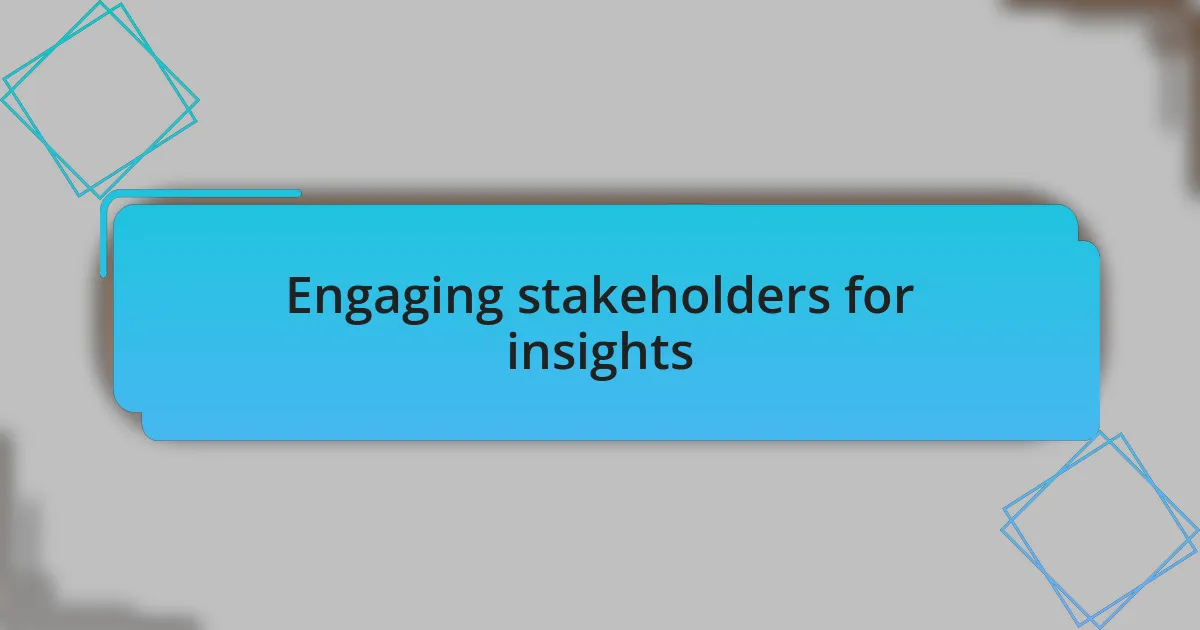
Engaging stakeholders for insights
Engaging stakeholders for insights requires actively listening and fostering trust within the community. I vividly recall a focus group where I sat with local activists who openly shared their frustrations about the lack of transparency in public projects. Their candidness struck me; they weren’t just sharing grievances but were seeking solutions. It made me wonder, how often do we truly create spaces for these dialogues?
In my experience, the value of stakeholder engagement lies in its ability to uncover hidden layers of corruption. During a community forum, a business owner recounted how the expectation of kickbacks had deterred him from expanding his enterprise. His story opened up a wider discussion about how fear of corruption stifled local entrepreneurship. It dawned on me that without these conversations, policymakers might miss crucial data that could drive effective interventions.
Establishing rapport with stakeholders not only helps gather insights but also empowers them to take ownership of the issues. One time, I facilitated a workshop where residents brainstormed potential solutions to reduce corruption in local governance. Watching their eyes light up with ideas reinforced the notion that they have invaluable perspectives. This experience made me think: if we empower these voices, how much more effective can our anti-corruption strategies become?
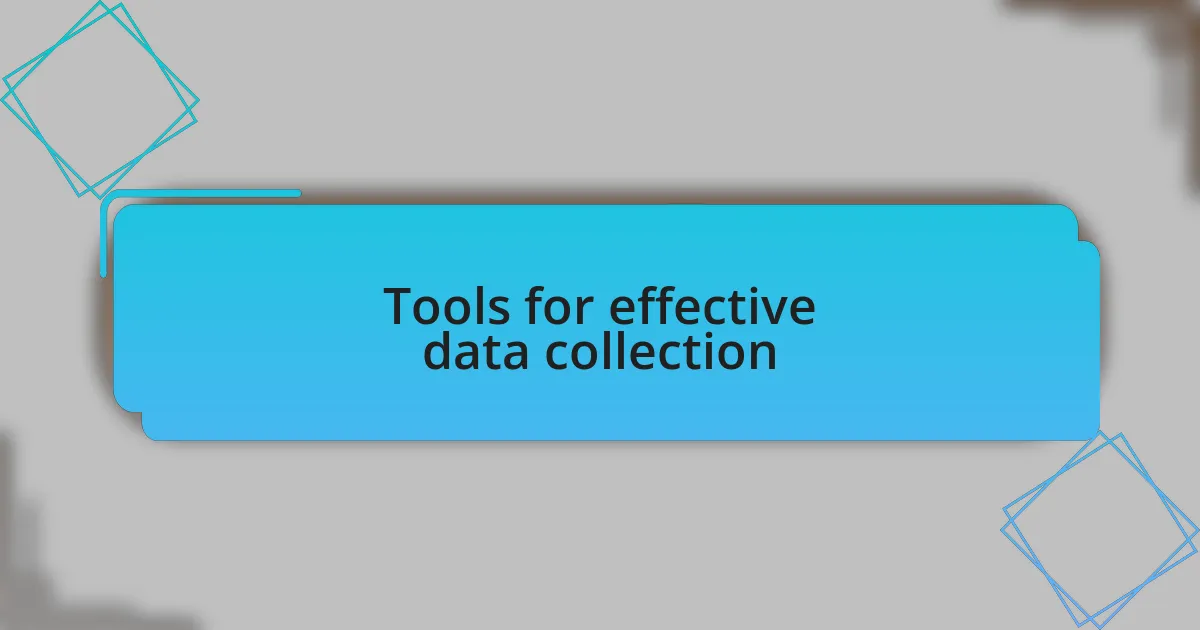
Tools for effective data collection
Effective data collection is the backbone of understanding community policy needs. I recall using surveys in a local neighborhood where I was surprised by the response rates. Many residents felt overlooked, and once they received the opportunity to share their experiences, the insights flowed. It made me wonder: how many critical opinions and data points are lost when we don’t actively seek feedback?
The tools we choose for data collection significantly shape the information we gather. One time, I conducted interviews with city officials who were initially hesitant to open up. However, once I employed a mix of qualitative and quantitative methods—blending open-ended questions with structured queries—the discussion shifted. I could see their guard drop, leading to some rich, unexpected insights about policy inefficiencies. Isn’t it fascinating how the right approach can transform a simple question into a pathway for deeper understanding?
Additionally, utilizing digital platforms for data collection can bridge gaps between different community sectors. During a project, I launched an online platform where residents could anonymously report concerns about local corruption. The volume and diversity of the data surprised me, highlighting issues that traditional methods could have missed. It got me thinking, how can we leverage technology further to empower community voices and enhance our understanding of policy needs?
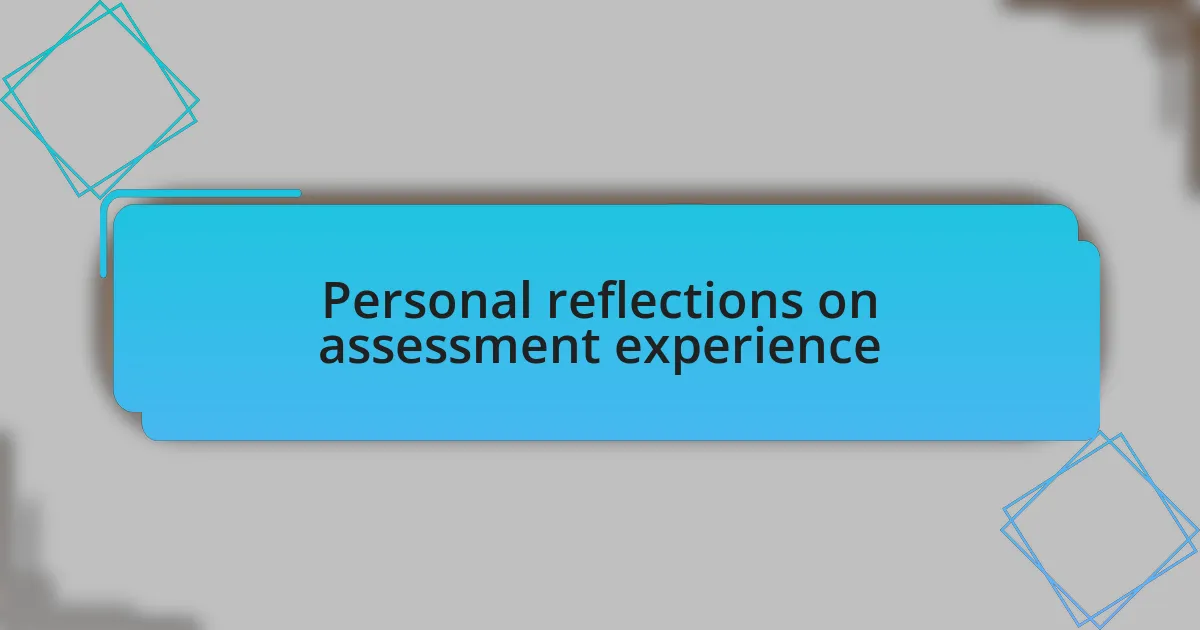
Personal reflections on assessment experience
Reflecting on my assessment experience, I vividly remember a particularly eye-opening focus group discussion. As I sat there, listening to residents share their frustrations, I felt a deep sense of responsibility. Their stories made the abstract concept of policy needs come alive for me. It was a stark reminder that behind every data point lies a human experience, which often goes unheard.
I also learned the importance of creating a safe space for dialogue during my assessment processes. In one instance, I was initially met with skepticism during a community meeting. Yet, as I shared my own vulnerabilities—admitting past missteps in understanding their needs—the atmosphere changed. People opened up in unexpected ways, and I felt a profound connection, which reinforced the notion that transparency fosters trust. How often do we shy away from showing our true selves in these discussions?
Sometimes, I ponder on how my assessments might influence real change. While processing all the data and feedback I collected, I couldn’t shake the feeling of urgency to present these findings to decision-makers. I remember one night spent crafting a presentation that would resonate with officials, hoping to channel the community’s voices. It made me realize that each assessment is not just a task but a bridge connecting citizen concerns to policy action. What if my efforts could spark genuine dialogue and lead to tangible outcomes for the community?